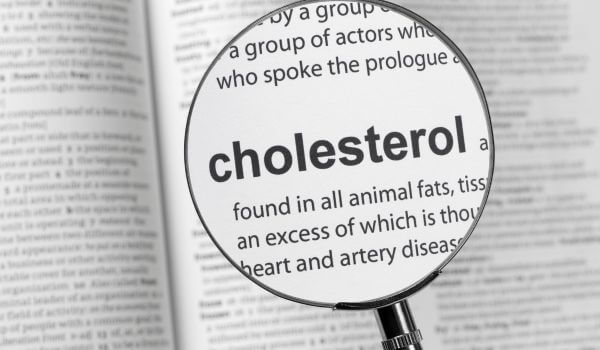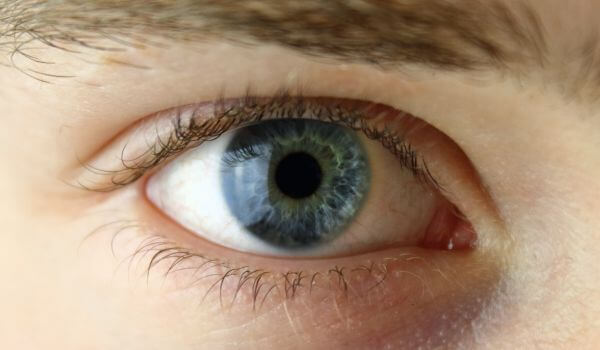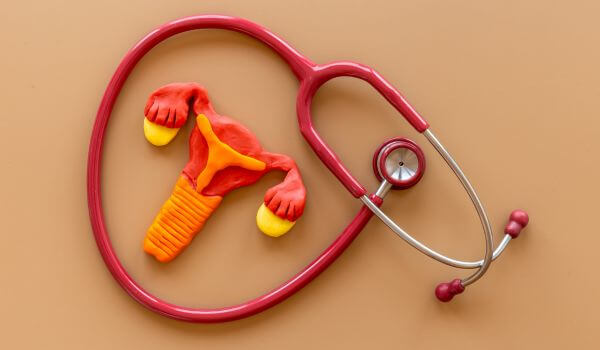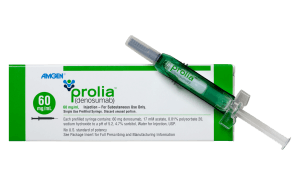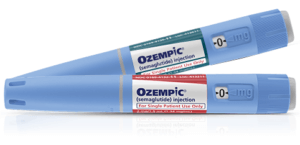 One of the most frequent questions visitors to our website pose to our pharmacy support staff is, “What’s the difference between headaches and migraines?” Many people are uncertain about whether they’re experiencing a headache or a migraine. While both conditions involve head pain, they differ significantly in their causes, symptoms, and treatments. Understanding these differences can help them manage their pain more effectively and seek the best treatment when necessary.
One of the most frequent questions visitors to our website pose to our pharmacy support staff is, “What’s the difference between headaches and migraines?” Many people are uncertain about whether they’re experiencing a headache or a migraine. While both conditions involve head pain, they differ significantly in their causes, symptoms, and treatments. Understanding these differences can help them manage their pain more effectively and seek the best treatment when necessary.
What are the main types of headaches?
A headache is a common condition that almost anyone can experience at some point. Headache pain typically affects various parts of the head and can range from mild discomfort to severe pain. There are several types of headaches, each with distinct characteristics:
- Tension headaches are the most common form of headache. They usually present as dull, aching pain on both sides of the head and are often associated with stress, poor posture, or muscle strain. They are generally mild to moderate in intensity and can last from 30 minutes to several hours.
- Cluster headaches are less common but can be much more painful. They occur in cyclical patterns or clusters, often waking people from their sleep with intense pain on one side of the head, typically around one eye. These headaches can last for weeks or months, with some periods of remission.
- Sinus headaches are related to sinus infections and are often accompanied by symptoms like nasal congestion, facial pressure, and pain around the eyes, cheeks, and forehead.
What are the distinguishing features of a migraine attack?
Migraines are a primary headache disorder not otherwise attributable to some other condition in the way that ordinary headaches can be. As well, a migraine attack is generally more severe and debilitating than a regular headache. Migraines often have other symptoms beyond head pain, which can help distinguish them from the different types of headaches.
The majority of people affected by migraines report a reasonably constant pattern that can be felt in three or four phases:
- Prodrome: Starting a few days before the migraine pain begins, which brings some slight warning signs of an upcoming migraine, including mood swings, constipation, increased urination, food cravings, neck stiffness, and frequent yawning.
- Aura: Coming closer to the onset of the pain (usually one to two hours), in which strange visual patterns, flashes of light, blind spots, feelings of “pins and needles” in the peripheries, weakness on one side of the body or face, and difficulty speaking are experienced.
- Attack: When pain builds up in one side of the head, pulsing and throbbing, there can also be extreme sensitivity to lights, noise, and odors. In intense attacks, people may feel nauseous up to the point of actually vomiting.
- Post-drome: After the pain subsides, there may be a prolonged period (a day or more) when the person feels drained and confused.
What sets headaches apart from migraine attacks?
The key distinctions lie in the symptoms preceding the headache, the intensity of the pain, and the duration of the episode. Typically, headaches are a dull ache or sharper pain without a specific focal point in the head, often accompanied by throbbing sensations and overall discomfort. On the other hand, migraines are more incapacitating.
Doctors have developed a method for identifying the distinct indicators of migraines, referred to by the acronym POUND:
- Photophobia and phonophobia: During a migraine episode, the patient will be highly sensitive to light and sound, which can trigger higher pain levels.
- Ongoing duration: A headache typically lasts three to four hours and can be relieved with simple over-the-counter medications, changing positions, or getting some rest. However, migraines, especially for individuals experiencing aura or who have repeated attacks, can last from 12 to 72 hours without relief and are not easily alleviated the way tension headaches are.
- Unilateral focus: In most cases, standard headaches cause pressure across the top of the head, around the crown (the “hatband”), or radiate down into the face and neck. In contrast, migraines are often more intense on one side of the head.
- Nausea: Individuals experiencing chronic migraine attacks may also suffer from nausea along with other discomfort. Sometimes, this nausea can be so severe that it leads to vomiting.
- Disabling intensity: The pain and discomfort from migraines can be so intense that it hinders people from carrying out their regular activities.
FAQ
What are the known causes of migraines?
Genetics has been identified as one of the leading causes of migraines. Migraines can run in a family, and it’s believed that over half of all people who experience migraines also have other family members who do as well.
Gender is another cause. Migraines are almost three times more common in women than in men, and their migraine attacks are more frequent, last longer, and are more disabling. Although there has so far been no biological link found, it’s believed to be caused by susceptibility to factors like physical & emotional stress. As well food allergies and lower tolerance to smoking, drinking, and heat are also believed to be playing a part.
The higher level of migraines in women can also be linked to hormones. Women who have irregular menstrual cycles, are using contraceptive pills or are premenopausal or are already in menopause are found to be the most highly affected. Another recognized cause is women with low progesterone, in which case the headaches can be a symptom of the underlying problem.
What can be a trigger for a headache?
The leading health website Mount Sinai lists some of the most common triggers for headaches as:
- Stress releases chemicals in the brain that cause vascular changes. Stress-related headaches are typically experienced in what is known as a “hat-band” distribution, symmetrically around the top of the head. Anxiety, worry, shock, depression, excitement, and mental fatigue can cause stress-induced headaches.
- Alcohol. Over-consumption of alcohol can cause dehydration and chemical imbalances in the brain, most often felt as a “hang-over” once the euphoric effect of the alcohol has worn off. People who are already experiencing cluster headaches can be more sensitive to alcohol.
- Allergies. When a person is exposed to their specific trigger, pre-existing allergies can cause inflammation in the upper nasal passages and sinus cavities. The released allergens pressure the sinuses and increase stress on the brain’s blood supply.
- Caffeine. In moderation, caffeine (and remember, both tea and coffee are loaded with caffeine) may even be beneficial when someone starts to feel the onset of a headache because it boosts the uptake of simple painkillers and this helps dampen the pain. However, too much caffeine can even trigger a headache because it raises blood pressure and heart rate, both of which can cause vasodilation in the brain.
What can be the trigger for a migraine attack?
Various factors, including stress, certain foods, hormonal changes, and environmental factors like intense smells or bright lights, can trigger migraines. Since genetics plays a decisive role, the specific triggers may be seen to run in families. Apart from that, the most common triggers have been found to include smoking, excess alcohol or caffeine (as well as withdrawal symptoms after addiction), hormonal changes in premenopause or use of birth control medications, exposure to chemicals, stress, loud noise, or bright lights.
What are the current treatment options for headaches and migraines?
The treatment for headaches and migraines differs based on their causes and symptoms.
- Over-the-counter (OTC) medications can be helpful for mild headaches. Nonsteroidal anti-inflammatory drugs (NSAIDs) such as Advil (Nurofen). However, it’s important to avoid overuse, as this can lead to a condition known as painkiller headaches, rebound headaches, or medication overuse headaches. Frequent use of OTC painkillers to relieve headaches can cause this. Rebound headaches often happen daily and can be very painful. There are also prescription forms of NSAID, such as Naprosyn, which delivers a much stronger dose (500 mg) and should be used only with a doctor’s supervision. It treats a wide range of pains, not only migraines.
- Persistent and severe migraines often require more targeted treatment. Triptans such as Imigran (Imitrex), Relpax, Maxalt, Frova, and Amerge are a group of medicines commonly used to treat migraines. They work by narrowing the dilated blood vessels in the brain and blocking pain pathways.
- If migraines are frequent or severe and have not been successfully treated with simpler medications, a different group known as calcitonin gene-related peptide (CGRP) receptor antagonists, such as Ubrelvy, Qulipta, and Nurtec, can be prescribed.
- The environment can trigger both headaches and migraines, and people can benefit from lifestyle changes. Regular exercise, adequate hydration, and proper patterns can help prevent future headaches while identifying and avoiding triggers is key for migraines. Keeping a migraine diary can help track patterns and triggers, aiding in developing an effective management plan.
- Some patients find relief through treatments like acupuncture, biofeedback, and relaxation techniques (deep breathing exercises and yoga.) These can be particularly useful for tension headaches and as complementary therapies for migraines.
When is it advisable to seek advice from a doctor?
It’s essential to consult a healthcare professional if headaches or migraines occur frequently, especially if the pain is severe or accompanied by other symptoms like fever, stiff neck, or sudden vision changes. These could be signs of a more severe condition that requires immediate attention.
If it becomes evident that the problem is migraines, a healthcare professional can help develop a comprehensive treatment plan. It may include both medication and lifestyle modifications to reduce the frequency and severity of attacks.
FAQ
What are some triggers for migraines, and how can I avoid them?
Factors like stress, certain foods (like cheese or chocolate), hormonal shifts, lack of sleep, and environmental elements like bright lights or strong scents set off migraines. To avoid triggers, it’s helpful to maintain a journal to spot patterns and strive for a daily routine that avoids any known triggers. Managing stress with relaxation methods and staying hydrated can also help avert migraines.
How do symptoms of migraines differ from those of tension headaches?
Tension headaches typically cause sensations on both sides of the head. Migraines are distinguished by throbbing pain on one side, often accompanied by symptoms like nausea, vomiting, and sensitivity to light. Tension headaches are generally milder and lack the secondary symptoms commonly seen in migraines. Recognizing these distinctions can assist in selecting the right treatment approach.
When should I seek advice for my headaches or migraines?
It’s advisable to seek guidance if instances of pain become more frequent and intense or if they start affecting daily activities. If it gives rise to extreme pain, changes in vision, or symptoms like fever or neck stiffness, seeking immediate medical assistance is crucial. These signs may indicate an ailment that needs immediate attention. Consulting with a physician can assist in controlling the symptoms and delaying more episodes.


